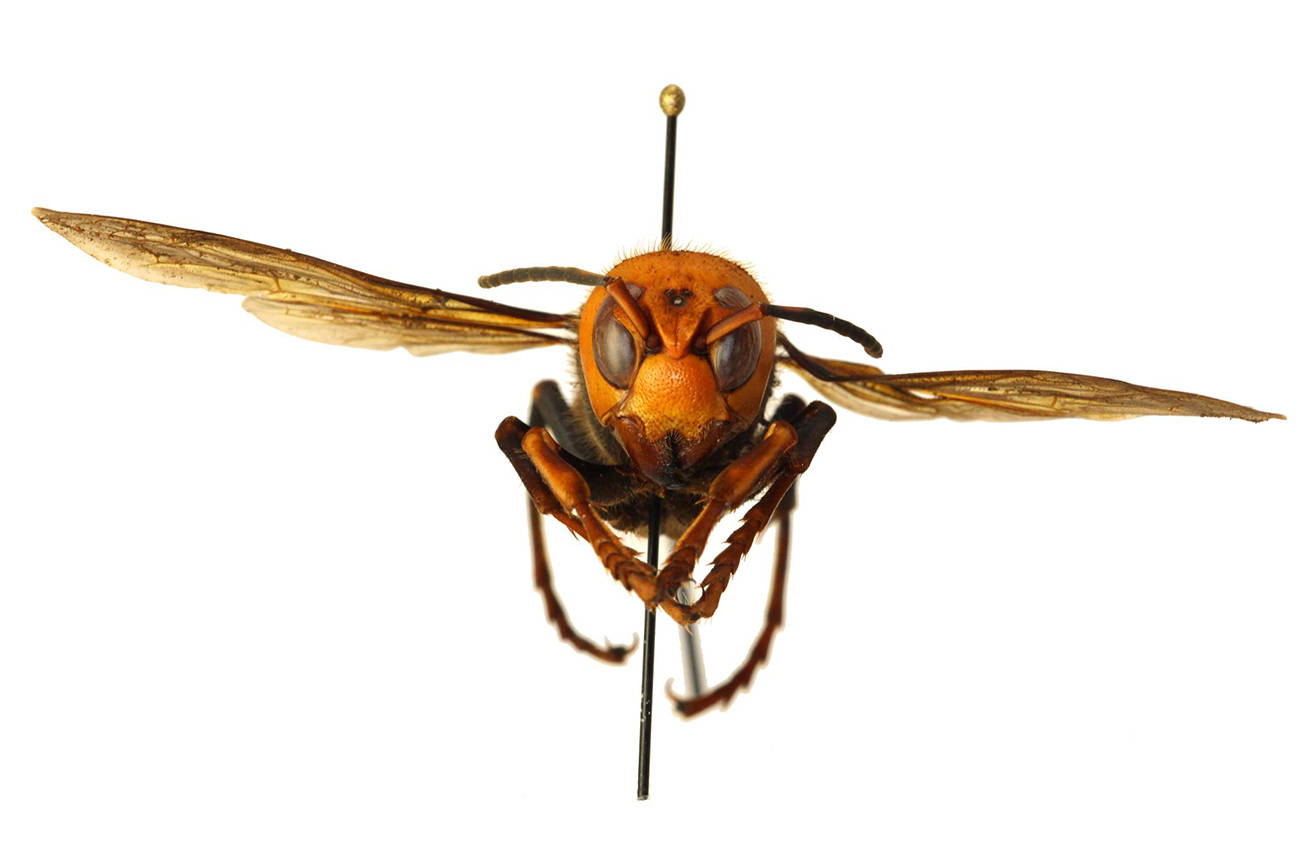It’s been happening at an alarming rate since a New York Times article telling of “murder hornets” settling in Washington, published in early May. People are mistaking bumblebees and other backyard pollinators for Asian giant hornets, killing them, then taking a photo and sending it to local beekeeping clubs or the state’s pest control division.
“People aren’t very good at identifying their pollinators,” Northwest District Beekeepers Association board member Meagan Wells said.
The state has received thousands of such calls and emails, some from as far as the Idaho and Oregon borders, state Department of Agriculture department spokesperson Karla Salp said. Local beekeeping clubs are getting calls, too.
Only five of them were correct. Three in Washington, and two in Canada.
A resident near Custer, in Whatcom County, found a dead Asian giant hornet while on a walk on May 27.
It was a queen, indicating a colony was likely established in Blaine in 2019, managing entomologist Sven Spichiger said at a news conference May 29.
“We’re proceeding like we had a nest established, and we have two or 300 queens and we need to go find them,” he said.
Days before, someone in Langley, British Columbia, found another queen.
“What was significant about the Langley finding is, contrary to our assumptions up to this time, the Asian giant hornet has distributed wider and farther than we had anticipated up to now,” said Paul van Westendorp, a provincial apiculturist for British Columbia.
The state Department of Agriculture first verified two reports of Asian giant hornets near Blaine in December. Authorities in Canada also discovered them in two locations in British Columbia in the fall of 2019 and removed an entire colony.
The Asian giant hornet is the largest in the world and is known for decimating hives of honeybees by decapitating them.
The hornets hunt insects and have little interest in humans unless someone steps on their nest, which are usually in the ground, van Westendorp said.
Spichiger said the term “murder hornet” is “unnecessary sensationalism.”
Van Westendorp compared the risk to swimming in the ocean.
“You have [sharks] here in the ocean right outside of Everett,” he said. “You may go put your body in the ocean and swim. Are you really worried about a white shark? Probably not.”
However, Asian giant hornets’ sting is more dangerous than that of common bees and wasps. It can cause severe pain, swelling, necrosis and, in rare cases, death, according to the state.
Anyone allergic to bee or wasp stings should not approach the hornets.
Wells said she is worried hysteria will erupt when yellowjackets make their annual appearance.
Yellowjacket queens begin to emerge from hibernation as the weather warms up. They’re bigger than the average wasp and often wait out the winter in warm places like apartments and garages. Wells said she’s already seen social media posts of people mistaking a yellowjacket queen for an Asian giant hornet.
But unlike yellowjackets, Asian giant hornets have an orange head and big pincers at their mouths. Yellowjackets are about 1/2 inch long, while the hornets can grow to 2 inches.
“My primary concern is that people will massively over [react] and wipe out bumblebees or other pollinators because they think they are Asian giant hornets,” Wells said.
Over Memorial Day Weekend, the state found several fake signs posted at trailheads in Snohomish County, including Tiger Mountain, claiming Asian giant hornets were nesting in the area.
No Asian giant hornets have been spotted in Snohomish or San Juan counties. That doesn’t mean, however, that they couldn’t make their way to either location.
“If the Asian giant hornet were to become established [in Whatcom County], it could spread … and it probably wouldn’t even take that long,” Salp said.
The Pacific Northwest is ideal habitat for the hornets, Spichiger said. The population here is on the cusp of becoming established.
“It is my belief we’re still very early on for any sort of infestation which gives us an opportunity to use everybody’s eyes and ears and wipe it out,” he said.
The state aims to eradicate the hornets before they gain a foothold.
Asian giant hornets come to the United States mostly on cargo ships from Asia.
If the species spreads south to Snohomish County, van Westendorp said, it will likely be through man-made means, such as a train traveling south.
“They could well be there already,” he said. “Or they could be there tomorrow.”
Salp said there have been a few “very suspicious” reports in other areas of Whatcom County and in Port Townsend.
The state’s website has detailed photos comparing the Asian giant hornet to other pollinators.
“Don’t kill it unless you’re 100% sure it’s an Asian giant hornet,” Salp said. “Please stop killing poor insects.”
How to spot an Asian giant hornet
The state Department of Agriculture has detailed descriptions and photos of Asian giant hornets on its website at agr.wa.gov/hornets.
Citizens can also volunteer to build and place traps for Asian giant hornets on their property starting in July. Commercially available hornet and wasp traps will not catch Asian giant hornets because the holes are too small for the hornets to fit through.



